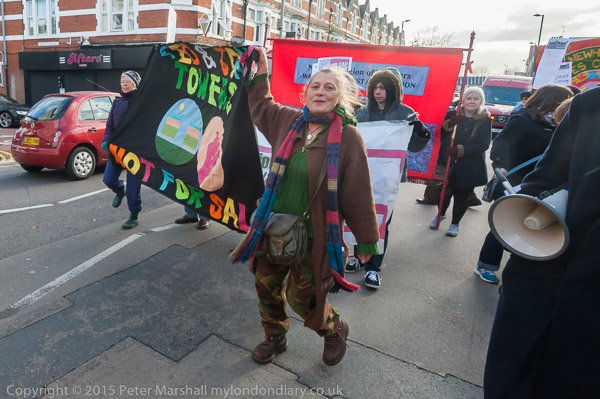
I missed one event entirely from the list on last November’s ‘My London Diary‘ page. Homes for All against social cleansing was present in its correct place if you scrolled down the page, but I’d failed to add it to the index at the top of the page.
It’s easy to do. All the code that runs this site is hand-crafted html, though written with the help of an ancient version of Dreamweaver, which does a nice job of looking after it and making life easier for me. It allows me to look at the site as a whole, and will search and replace across a file or a whole folder of files, and handles some of the actual coding, though I spend quite a lot of time in its ‘Code View’, because it’s easier to do some things that way.
People, particularly some web designers, look at me or sometimes actually tell me I’m mad to do it this way, or show disbelief that a site of this size – now over 150,000 images – can be organised this way. I probably am mad, but it remains the easiest and quickest way to do it. I started writing html in 1995, and more or less kept up with the changes , including converting my sites to use CSS. Several times I’ve played around with using designs based on data bases but never yet found anything that would give me the speed, flexibility and ease of plain old html.
Partly it is down to site design. I played around with this site for the first few years, and it was only after around 6 years that I finally came up with the current design (though there have been a few minor tweaks since then.) But the main reason is that what takes the great majority of the time is actually writing the captions and text which I think are essential to accompany the images.
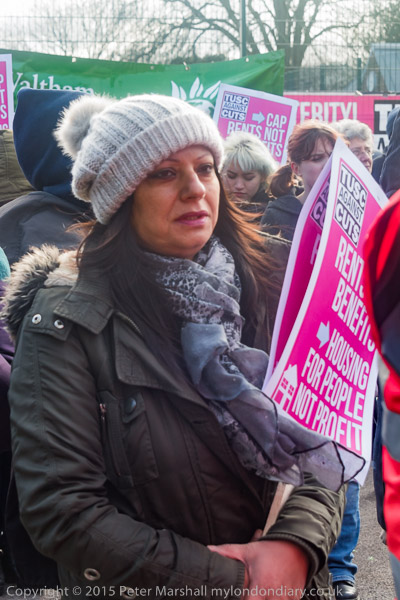
November 21st last year was a cold and windy but sunny morning in London. Clear air and a low sun gave me some problems with exposure because of the high contrast, and exposing to keep details in the highlights left Lightroom a lot of work to do to bring up details in the shadows. Although I had the ISO set to 800, some of the darker areas show the kind of blotchy colour patches that are more normal at perhaps ISO6400. The images are also rather grainier than normal, though perhaps I could have been more aggressive with the noise reduction. NR is one area of LR which could do with some improvement, and third-party add-ons such as Dfine – now available free as part of the Google Nik collection – can significantly improve images. But using this takes too long (and takes up too much disk space) for it to be a part of my normal workflow.
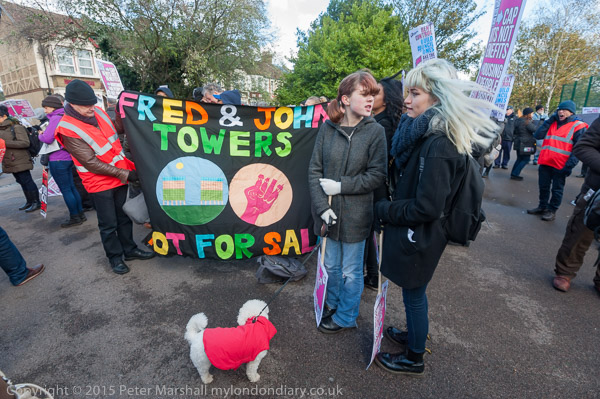
Things like the small dog in a red coat in the picture above help in making pictures that otherwise can too easily look like any other protest rally. Of course the people are different, though there were quite a few present I’d photographed at other protests, and this was a new location. But it wasn’t a very inspiring location, a rather scrappy area of asphalt at the entrance to a small park.
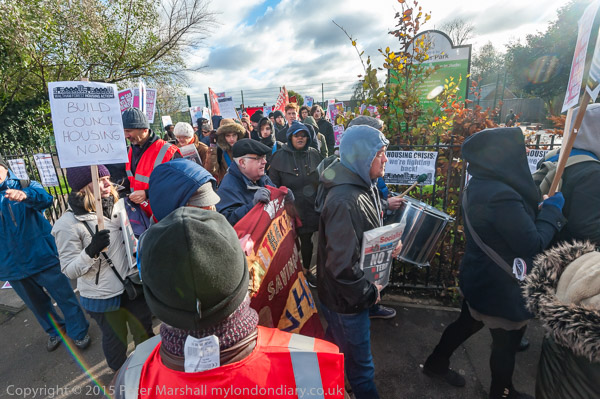
Making images got a little easier once the marchers left the park and came out onto the road, though as you can see above the sun was still causing problems. Lens hoods on wide-angle lenses like the 16-35mm are not really a great deal of use. The sun was only just out of image at top right, and there was considerable flare and ghosting in that corner, as well as across the frame, with a neat rainbow on the roadway at bottom left.
Although sometimes such effects add to an image, I didn’t feel they did in this case. I’ve done a little burning in on local areas, increasing contrast and clarity and reducing the highlights to make the effects less visible. Sometimes cutting down the saturation helps too. This was an image taken from a high viewpoint, holding the camera well above my head and hoping – and wishing I was using the Fuji X-T1 or some other camera with a tilting screen. I sometimes use the camera’s live view while taking overhead images like this, but it is really difficult to make out anything on the rear screen in bright light.; cupping the left hand around the top of the screen slightly restricts reach but does make the screen a little more visible.
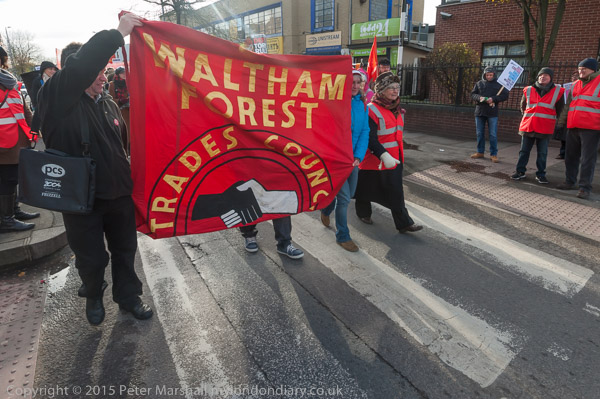
When using the camera at eye level, I usually add my left hand on top of the lens hood when the sun is close to the frame edge – and usually find I have to crop a little of it out at the top of the frame, but at least it does produce a reasonably effective lens hood.
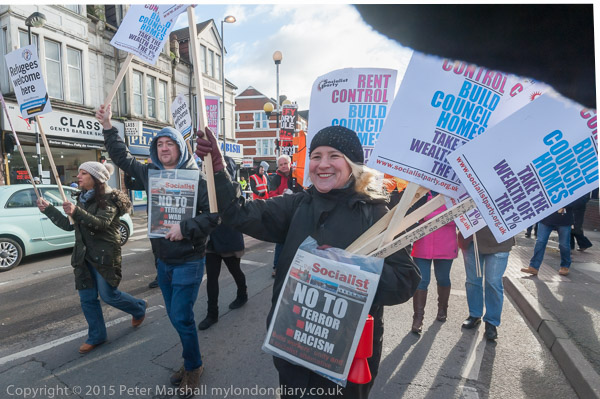
But sometimes my hand – or other objects – can get out of hand, as in what is one of my favourite frames from the event. Whatever it was, it wasn’t meant to be there, but I don’t think it entirely spoils the image. I was walking backwards fairly close to the woman with the placards, with the 16-35mm on the D700 at 16mm and things get just a little tricky to manage. This was the last of several frames I’d taken of her, and the previous few frames I’d been a little further away; while that makes life easier, it also reduces the impact of the image.
Text and more pictures at Homes for All against social cleansing.
______________________________________________________
There are no adverts on this site and it receives no sponsorship, and I like to keep it that way. But it does take a considerable amount of my time and thought, and if you enjoy reading it, the occasional small donation – perhaps the cost of a beer – would be appreciated.
My London Diary : Buildings of London : River Lea/Lee Valley : London’s Industrial Heritage
All photographs on this and my other sites, unless otherwise stated, are taken by and copyright of Peter Marshall, and are available for reproduction or can be bought as prints.
To order prints or reproduce images
________________________________________________________